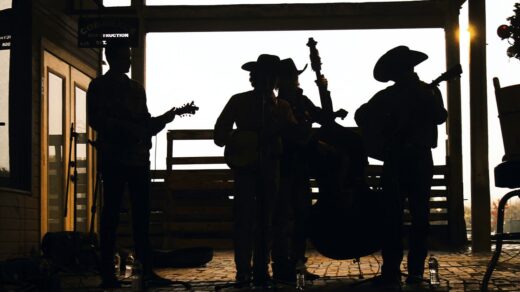What is jazz? It is exciting rhythms, pleasant live music that is constantly evolving and moving. No other genre is perhaps comparable to it, and it is impossible even for a beginner to mistake it for any other genre. The inventiveness, as well as the passion with which jazz compositions are filled, has no limits. And here’s the paradox – it’s easy to hear and recognize this extraordinary music, capable of expressing the full range of human feelings, from boundless joy to unbridled anger, but not so easy to describe in words. It is diverse and varied, it is constantly improving, and therefore the concepts and characteristics used today are already outdated in a year or two.
Jazz is a movement in music that emerged in the United States in the very early twentieth century. It closely intertwines the rhythms, ritual chants, and work songs of African Americans, as well as the harmonic component inherent in the music of white immigrants. In other words, it is an improvisational genre resulting from the blending of Western European and West African music.
What are the characteristics of jazz music?
The first and most important feature is improvisation. Musicians should be able to improvise both in orchestra and solo. Another equally important feature is polyrhythm. Rhythmic freedom is perhaps the most important feature of jazz music. It is this independence that makes musicians feel weightless and constantly moving forward. Think of any jazz composition? It seems that the performers casually play a wonderful and pleasing to the ear melody, no strict frameworks, like in classical music, only a surprising lightness and relaxation. Of course, the jazz pieces, like the classical ones, have their own rules, however, due to the syncopated melodies and the special rhythm, which is called swing, and there is such an unusual feeling of freedom. What else is important for this trend? Of course the beat, that is, the regular pulsation.
History of Jazz
It is well known that the birth of jazz, as a musical trend, occurred in the United States in the late XIX century, but it should be noted that its origins should be sought far from America – in Africa. And it all began with the discovery of a new continent by Columbus, to which in the early 17th century the British began to bring black slaves. The slaves, coming from different tribal communities, did not understand each other at first. To survive in a completely new environment, they not only had to find ways to communicate, but also to create a unified culture, including a musical culture that was based on the rhythms and motifs of their native Africa. Exhausted by hard work and enduring the cruel treatment of their white masters, the slaves initially consoled themselves in their hours of rest with ethnic ritual songs, with their characteristically intricate rhythms. Because African Americans had no musical instruments, their singing was always accompanied by peculiar dancing clapping and stomping. Over time the forced migrants began to adapt to the new conditions. Other tunes emerged in their lives that were influenced by the culture of the white masters, such as the spirituals: improvisational, highly emotional spiritual chants or the field hymns: roll call songs sung by slaves while working on the plantations.
After the Civil War between 1861 and 1865, slavery was abolished in the United States, but such changes did not make life easier for the country’s black population. African Americans had to roam from town to town in search of work. Minstrel shows with black musicians roamed the country, entertaining the casual crowd with songs and dances, such as the keikuok, later a precursor to ragtime, one of the most important sources of jazz. Around the same time, the blues, songs of loneliness and despair, another primary component of jazz music, emerged as a reflection of the sad lives of America’s black citizens. Thus the long interaction of African music culture, which was characterized by improvisation, plasticity and rhythm, and American folk music of the white settlers, with its inherent harmony and melody, led to the emergence at the very end of the 19th century of an entirely new kind of music, subsequently called jazz.
New Orleans is considered the cradle of jazz music. It was in this South American city at the very beginning of the twentieth century that the outlandish near-ethnic style began to change significantly. Jelly Roll Morton, Buddy Bolden, and Kid Ory were the founders of New Orleans jazz, which later became known as “traditional” as well as “dixieland. Thanks to the work of these musicians, “syncopated music” began to rapidly gain popularity and spread actively across the country.










